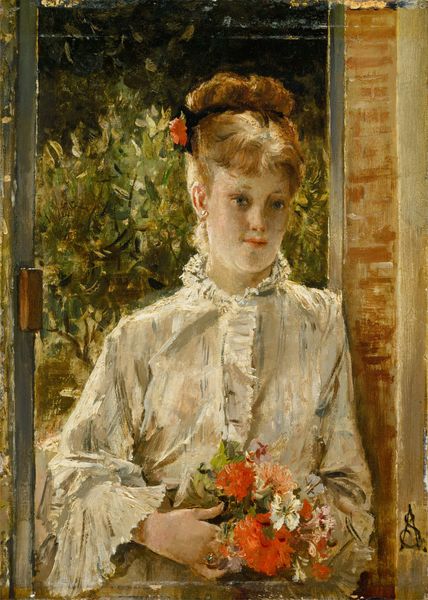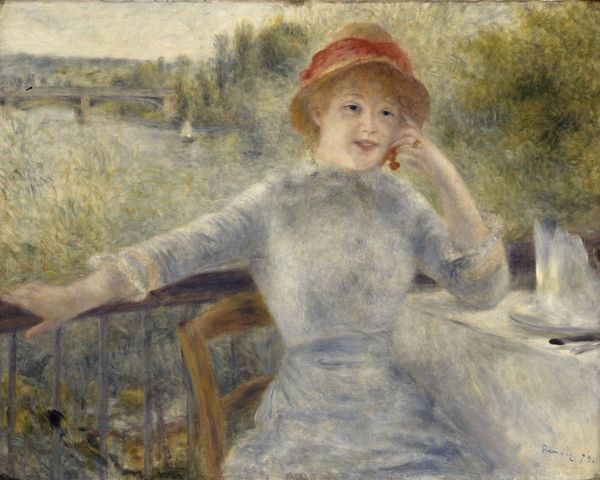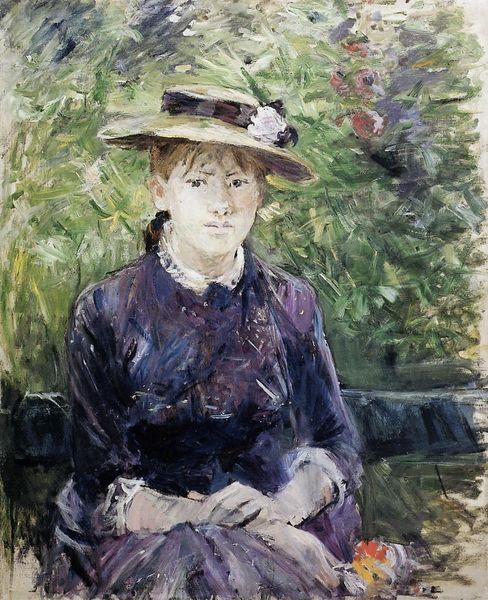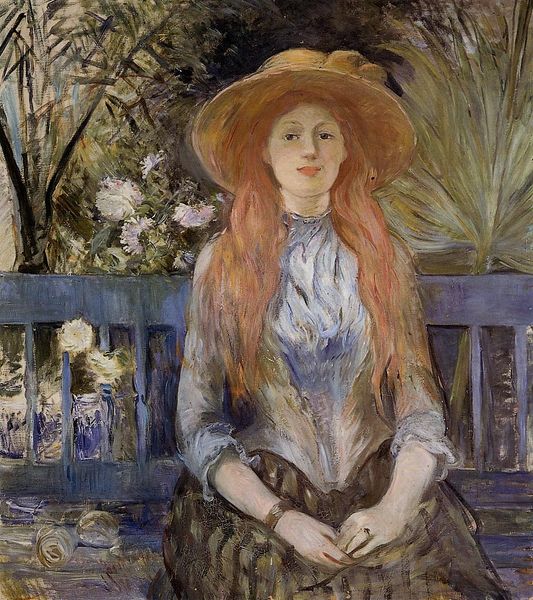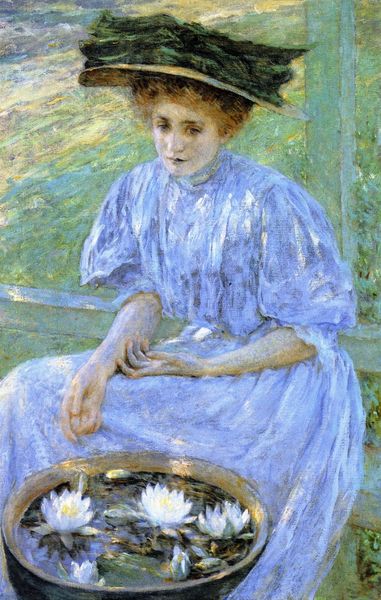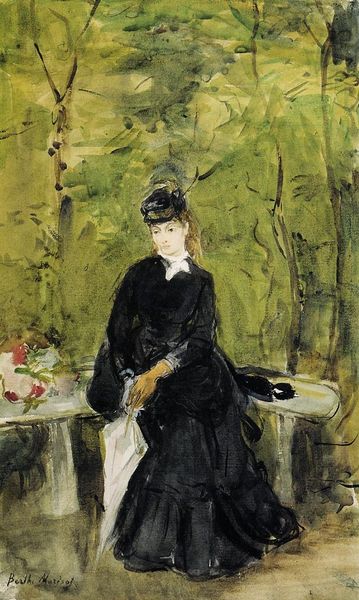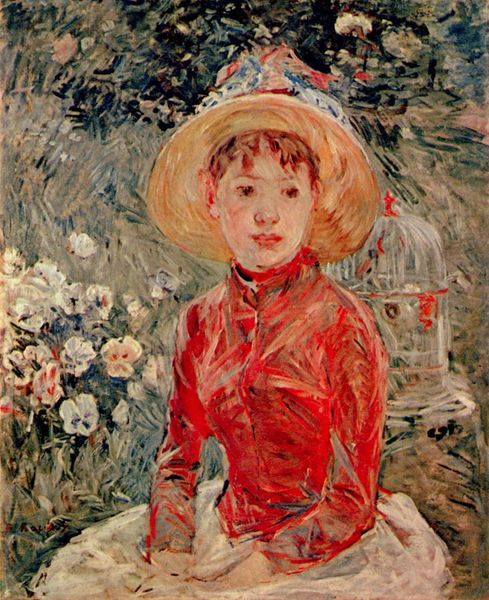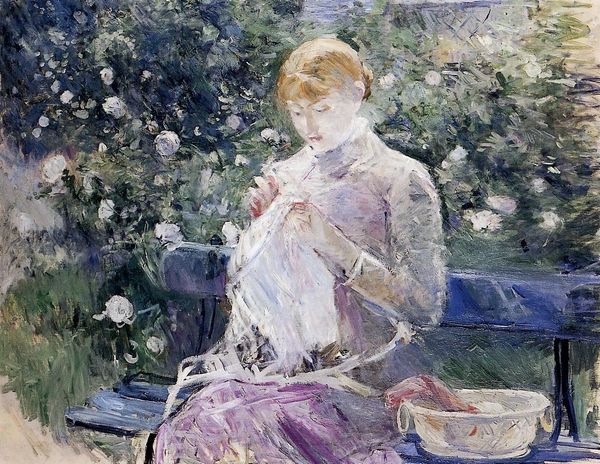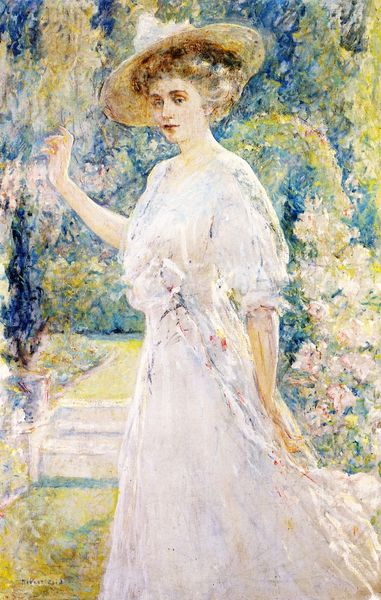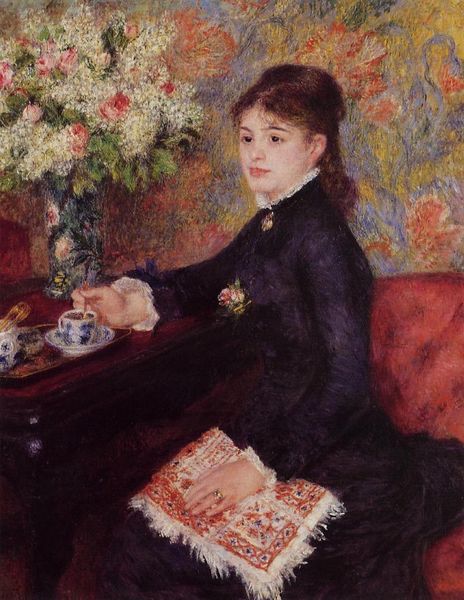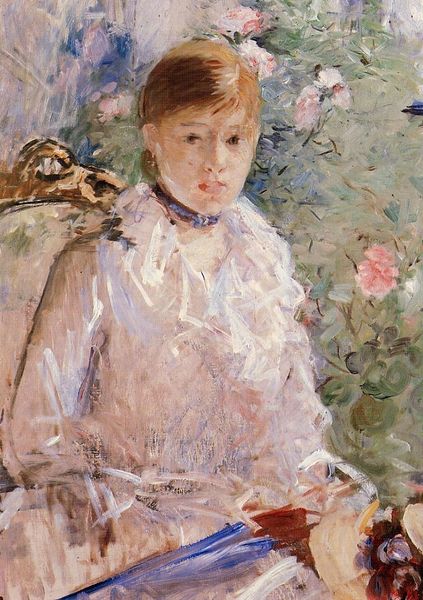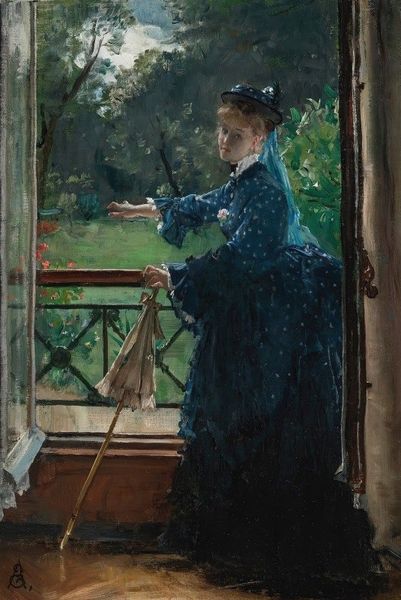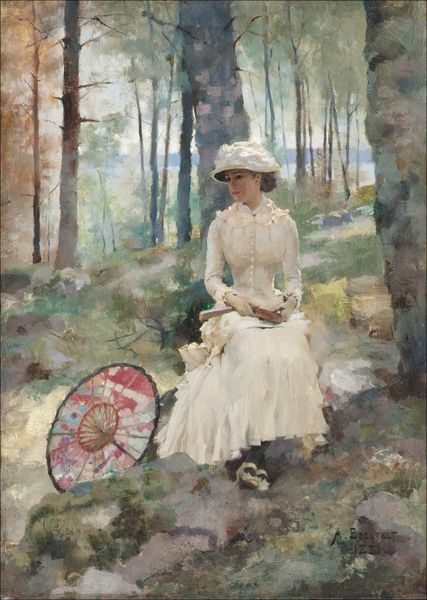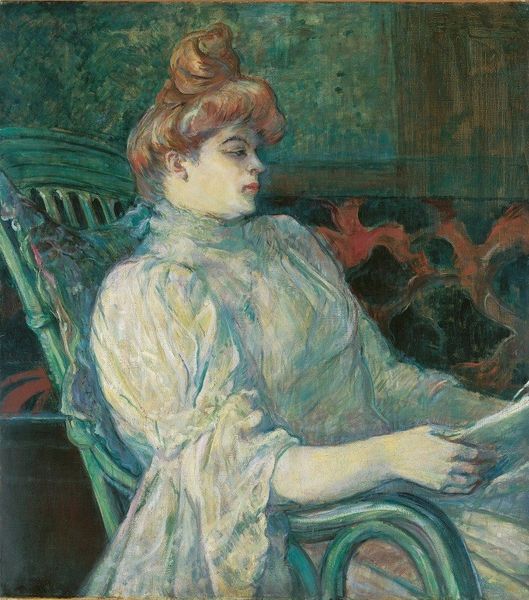
Copyright: Public domain
Editor: "After Luncheon," an 1881 oil painting by Berthe Morisot, presents a figure bathed in soft light against a backdrop of what appears to be a sun-drenched garden. It's incredibly beautiful and captures this intimate moment of repose. The details are softly brushed, creating this almost dreamlike quality. What stands out for you in this piece? Curator: What immediately grabs me is how Morisot utilizes the materiality of paint itself to evoke a sense of bourgeois leisure and the domestic sphere. Notice the fluid brushstrokes, how she almost dissolves the figure into the surrounding environment. Consider the labour involved. How does this rapid, seemingly effortless application of pigment both celebrate and perhaps subtly critique the societal expectations placed on women of her class? Editor: Critique? I see the painting as celebrating the joys of nature and femininity. Curator: Perhaps. But think about the material reality. Oil paint at the time wasn’t simply conjured, its production relied upon specific labour dynamics and global trade networks. How does Morisot's choice of oil on canvas situate this scene within the complex structures of 19th-century capitalism and artistic patronage? Also, consider the role of the sitter – most likely a family member given constraints around women operating in public space at the time, especially without chaperones. This constraint influenced their artistic subject. Editor: I never considered how materials reflected social structures back then. Curator: Indeed! Examining art through its means of production opens us up to the wider social and economic realities of the time. Understanding Morisot's process and the materials she employed enhances our comprehension, beyond simply admiring its visual appeal. Editor: I see that. Thanks! Thinking about paint, brushes, and canvas adds a whole new dimension to interpreting this artwork. Curator: Absolutely. The beauty of materialist analysis is revealing the often-unseen connections between art, labour, and the cultural values of its time.
Comments
No comments
Be the first to comment and join the conversation on the ultimate creative platform.
